Designing Temperature and pH Sensitive NIPAM Based Polymers
Gangadhar Panambu, Ilya Koltover, and Scott Batcheller
MilliporeSigma
Stimuli-responsive Polymers
Stimuli-responsive polymers, also known as “smart” polymers or “environmentally sensitive” polymers, undergo rapid changes in their microstructure from a hydrophilic to a hydrophobic state, triggered by changes in the environment. External stimuli, including heat, pH, ionic strength, magnetic and electric fields, light, ultrasound, and chemical species trigger changes in the environment. The macroscopic changes that occur are reversible; therefore the system is capable of returning to its initial state when the trigger is removed.
Stimuli-responsive Polymer Forms
Classes of stimuli-responsive polymers based on physical forms; (a) Linear free chains in solution, (b) covalently cross-linked reversible and physical gels and (c) chain adsorbed or surface-grafted forms.
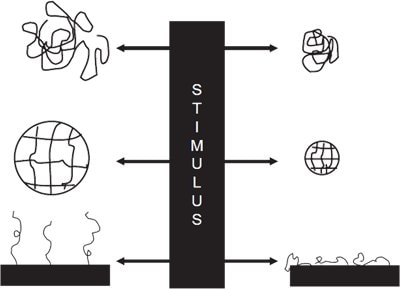
Figure 1.a) Collapse of linear free chains b) Swelling or shrinking of a gel c) Swelling or collapsing on surface
Applications of Stimuli-responsive Polymers
The unique properties of stimuli sensitive polymers find several applications in chemical and biological processes such as controlled and self-regulated drug delivery, bio-conjugation, tissue engineering, biosensors, bio-separation etc.
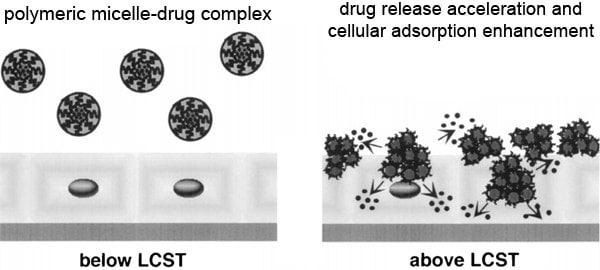
Figure 2.Applications of Stimuli-responsive Polymers
Temperature modulated drug release with PNIPAM micelles and enhanced cellular adsorption with PNIPAM. A transition across the lower critical solubility temperature (LCST) causes the physical change.
Temperature & pH Sensitive Polymers
Temperature and pH sensitivity are the most interesting properties in stimuli-responsive polymers because:
- Some disease states manifest themselves by a change in temperature and/or pH.
- Ease of tuning stimuli response to desired temperature and pH range.
The most extensively investigated temperature/pH sensitive systems are based on poly(N-isopropylacrylamide) (PNIPAM). A series of temperature- and pH-sensitive polymers based on poly(N-isopropylacrylamide) has been developed. PNIPAM can be chain-end functionalized with carboxylic acid, NHS ester, amine, and maleimide groups. NIPAM can be copolymerized with methacrylic acid to impart pH sensitivity. Also pH & temperature sensitive hydrogels were prepared using NIPAM, acrylic acid and a di-acrylamide crosslinker.
PNIPAM exhibits a LCST of ~32 °C in aqueous solution, and the LCST can be easily manipulated by copolymerization of NIPAM with suitable monomers.
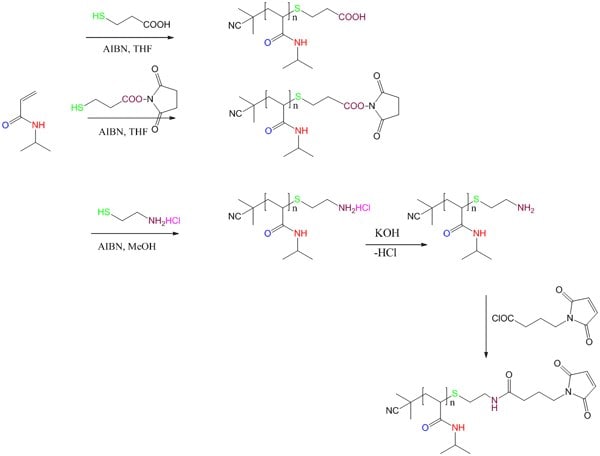
Figure 2. Synthesis of Chain End Functionalized PNIPAM
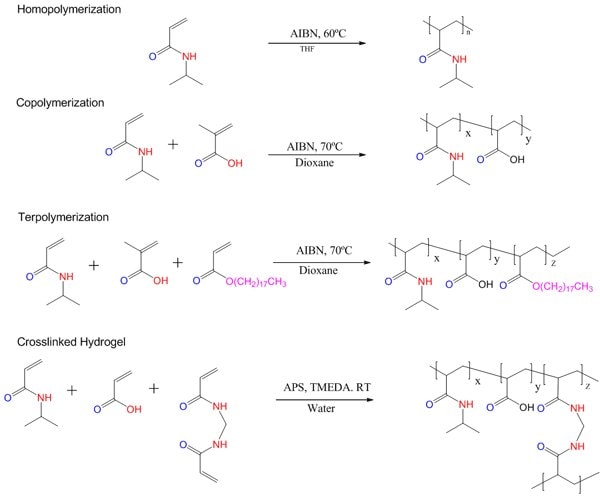
Figure 4.Synthesis of Heat & pH Sensitive PNIPAM
![Molecular weight can be controlled with the use of a chain transfer agent (CTA). Dependence of molecular weight on CTA concentration in the synthesis of PNIPAM-COOH [AIBN]/[NIPAM] = 0.1; Temperature 60 ºC, in THF. Physico-chemical Characterization](/deepweb/assets/sigmaaldrich/marketing/global/images/technical-documents/articles/materials-science-and-engineering/drug-delivery/nipam-cta/nipam-cta.jpg)
Figure 5.Molecular weight can be controlled with the use of a chain transfer agent (CTA). Dependence of molecular weight on CTA concentration in the synthesis of PNIPAM-COOH [AIBN]/[NIPAM] = 0.1; Temperature 60 ºC, in THF.
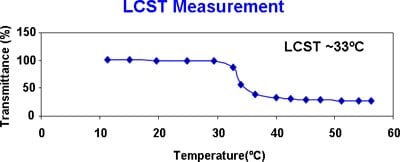
Figure 6.Plot of transmittance as a function of temperature for P(N-isopropylacrylate-co-5% methacrylic acid), 1% aqueous solution, pH = 4.46
Materials
如要继续阅读,请登录或创建帐户。
暂无帐户?